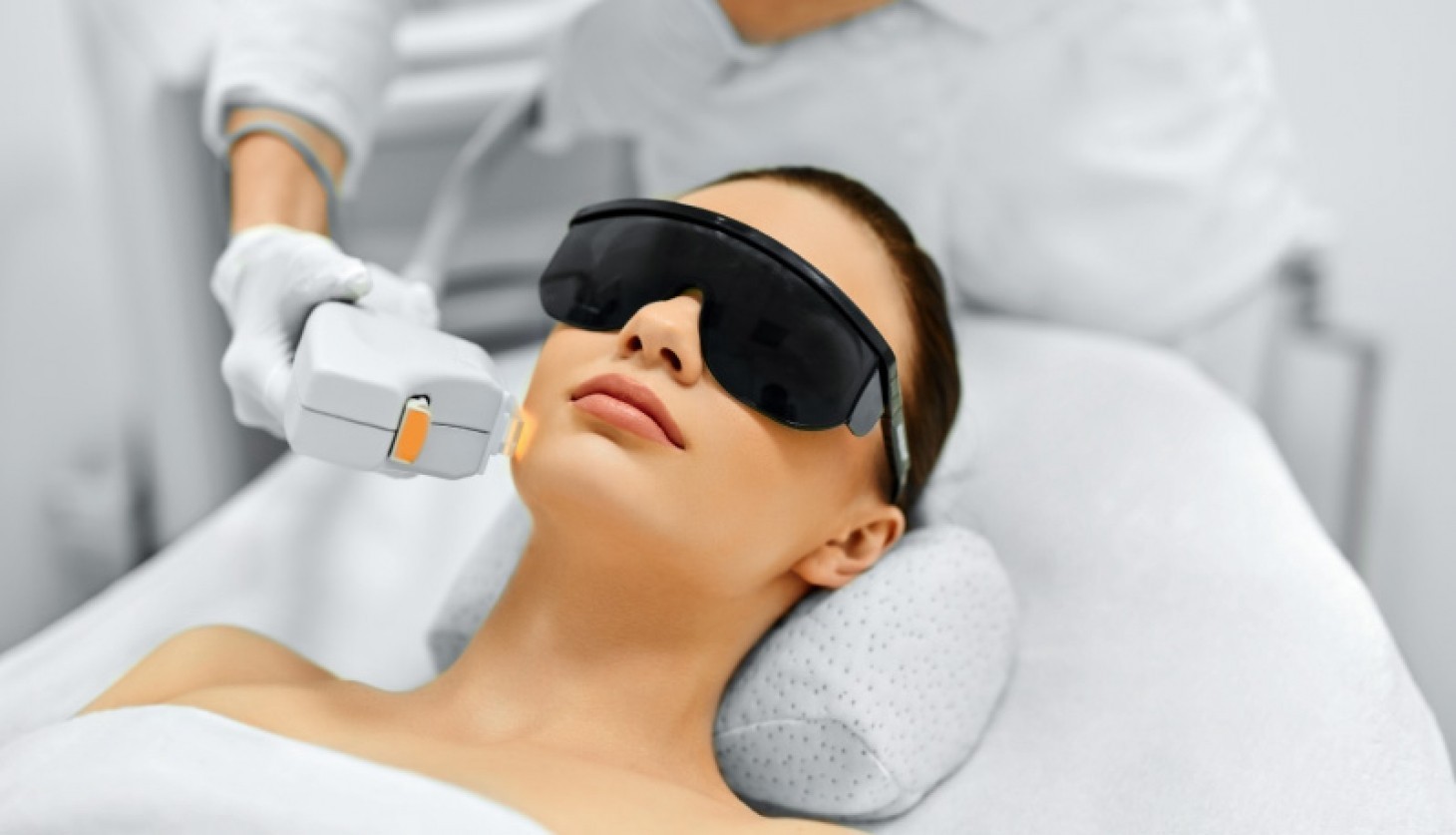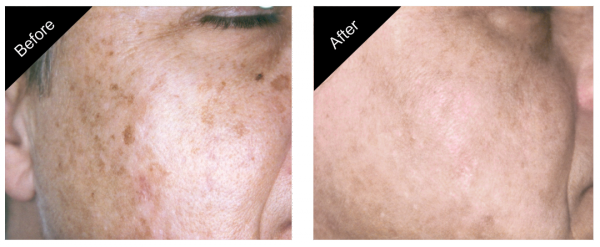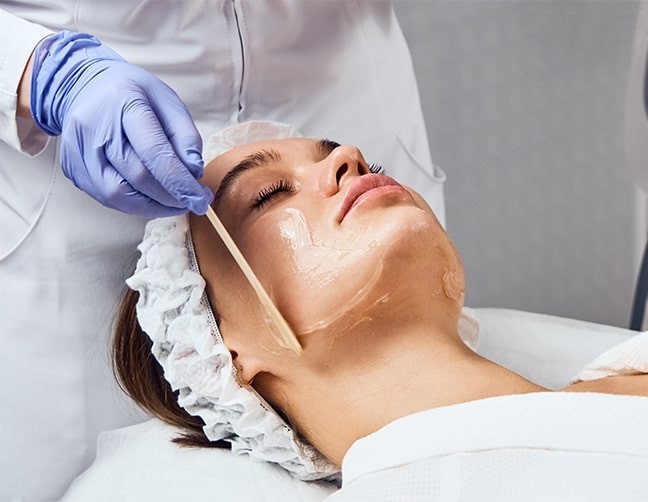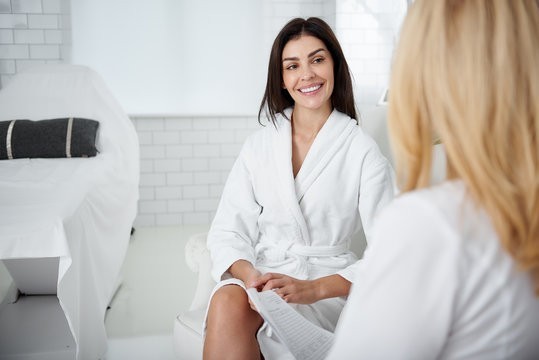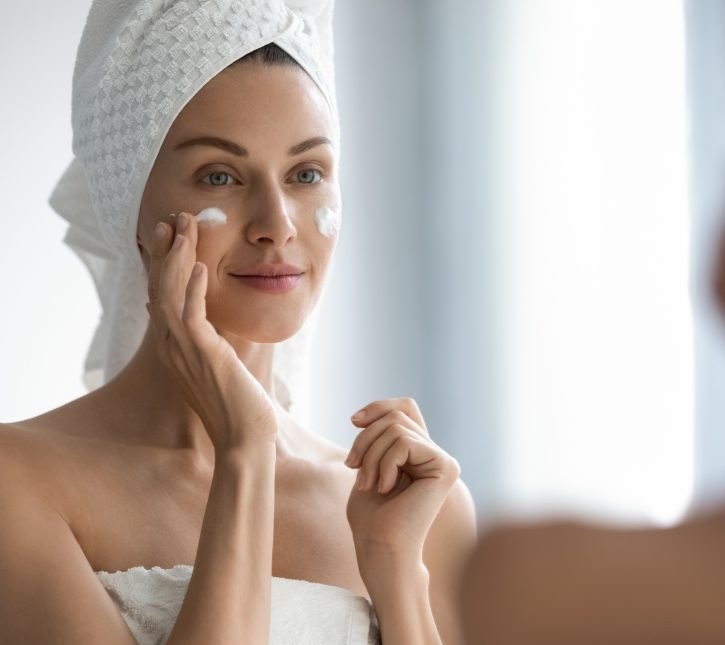- How it works
- What Conditions can an IPL treat?
- Pre-treatment instructions
- Contraindications
- Post-treatment instructions
- Where else can you use IPL?
- How does IPL help rejuvenate skin?
IPL often referred to as a photofacial can treat several specific skin concerns and provide overall facial rejuvenation by improving skin tone and texture.
- Reduce skin discolorations such as freckles, birthmarks, age spots and sun spots
- Rid the skin of vascular lesions such as broken capillaries and spider veins
- Improve the appearance of scars
- Tighten and smooth skin
- Reduce wrinkles and pore size
- Reduce facial redness resulting from rosacea
4 Weeks Before:
- Preparation for an IPL procedure usually starts four weeks in advance, following your first consultation. During this time, you should avoid excessive sun exposure (tanning) and regularly apply SPF sunscreen to protect your skin from UV radiation.
2 Weeks Before:
- Avoid taking aspirin or other anti-inflammatories that may increase the chances of bleeding, and stop using any skin care products that contain abrasive ingredients, such as retinol, that may increase skin sensitivity during treatment.
2 Days Prior
- Shave the treatment area in preparation for treatment.
Day of treatment instructions
- On the day of treatment, the skin should be clean of any makeup or cosmetics. Prior to starting treatment, the skin will be cleansed, cooling gel and icing may be provided to cool skin down in preparation for the treatment. Protective eyewear will be worn by the patient and provider.
- The procedure itself lasts 30 minutes and takes place lying down. The provider will move the IPL device across the treatment area as bursts of light are applied; you will feel a stinging sensation.
- Immediately following the procedure, the treatment area will feel hot and sensitive. This usually subsides within a few hours.
The presence the following would be a contraindication to IPL photofacial therapy:
- History of melanoma
- Raised moles
- Suspicious lesions
- Keloid scar formation
- Healing problems
- Active infections
- Open lesions
- Hives
- Herpetic lesions
- Cold sores
- Tattoos or Permanent make-up in area of treatment
- Recent use of Accutane, tetracycline, or St. John’s wort in the last year
- Autoimmune diseases such as Lupus
- Scleroderma
- Vitiligo
- Pregnancy, trying to become pregnant or nursing
Initial recovery from an IPL treatment can take up to two days. During this time, you should avoid direct sunlight or hot water, since it may damage the sensitive skin. Following this, you are advised to wear SPF 30+ sunscreen for up to six weeks.
Although many patients report visible improvement after just one treatment, typically a series of 2–6 IPL sessions (spaced four weeks apart) for general skin rejuvenation are recommended. If treating severe skin damage or discoloration, additional treatments may be needed.
- Do not pick or scratch at the treatment scabs. Let them fall off on their own, approximately 3-5 days.
- 24 Hours After: Before washing face, then only use a gentle cleanser. Wash treated area with hands, not a wash cloth. After you wash your face, apply a moisturizer, if necessary, approved sun screen with
SPF 30 or higher - 24 Hours After: You are able to use a powder based mineral make-upli
- First 48 Hours After: Avoid thermal trauma such as hot showers, whirlpool, steam rooms, saunas, etc., for two days following treatment. Do not do anything that will make you sweat, (ie: working out that
gym) for two days following the treatment. - For First Week: Avoid anti-inflammatory medications for 1 week following treatment, IE: Ibuprofen, Advil, Motrin, Excedrine, Nuprin, or antihistamine medications is encouraged.*** Discuss any current medications that you are taking with your doctor prior to stopping or pausing usage.***
- First 30 Days: If you are out in the sun, you need to reapply medical professional sunscreen every two hours.
- IPL can be used on all areas of the body. The most common areas of treatment are zones that are regularly exposed to the sun. These often include the face, neck, décolletage, legs, hands and arms. If you are out in the sun, you need to reapply medical professional sunscreen every two hours.
Intense pulsed light (IPL) therapy, aka photofacial, is a way to improve the color and texture. It can undo some of the visible damage caused by sun exposure called photoaging.
IPL uses light energy to target accurately and remove pigmented or damaged skin cells or hair follicles.
Using a handheld device, with designated filters, it help targets conditions such as sun lesions, vascular lesions and much more. This light heats cells in the skin and breaks them down. The body then removes the damaged tissue naturally
